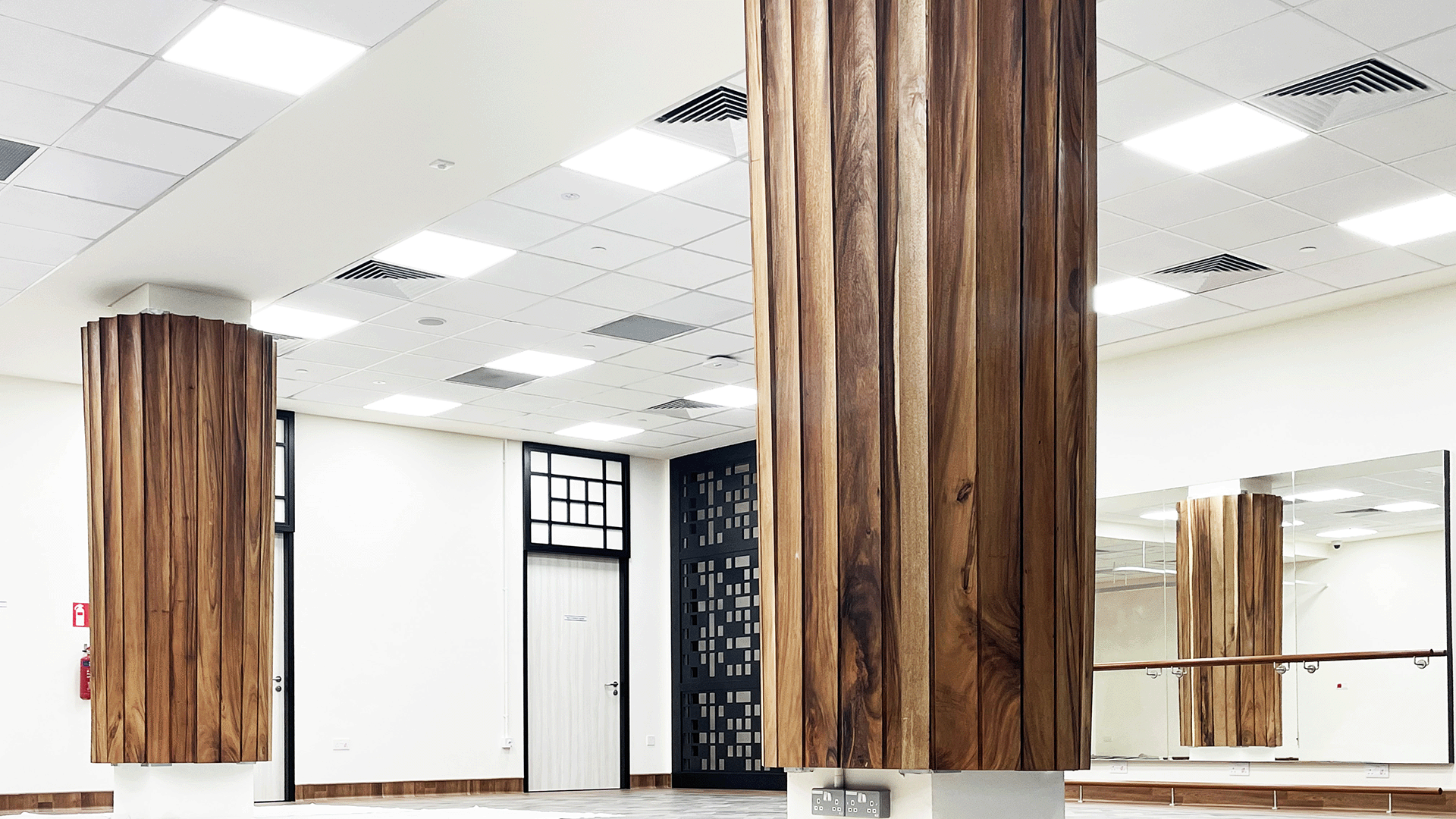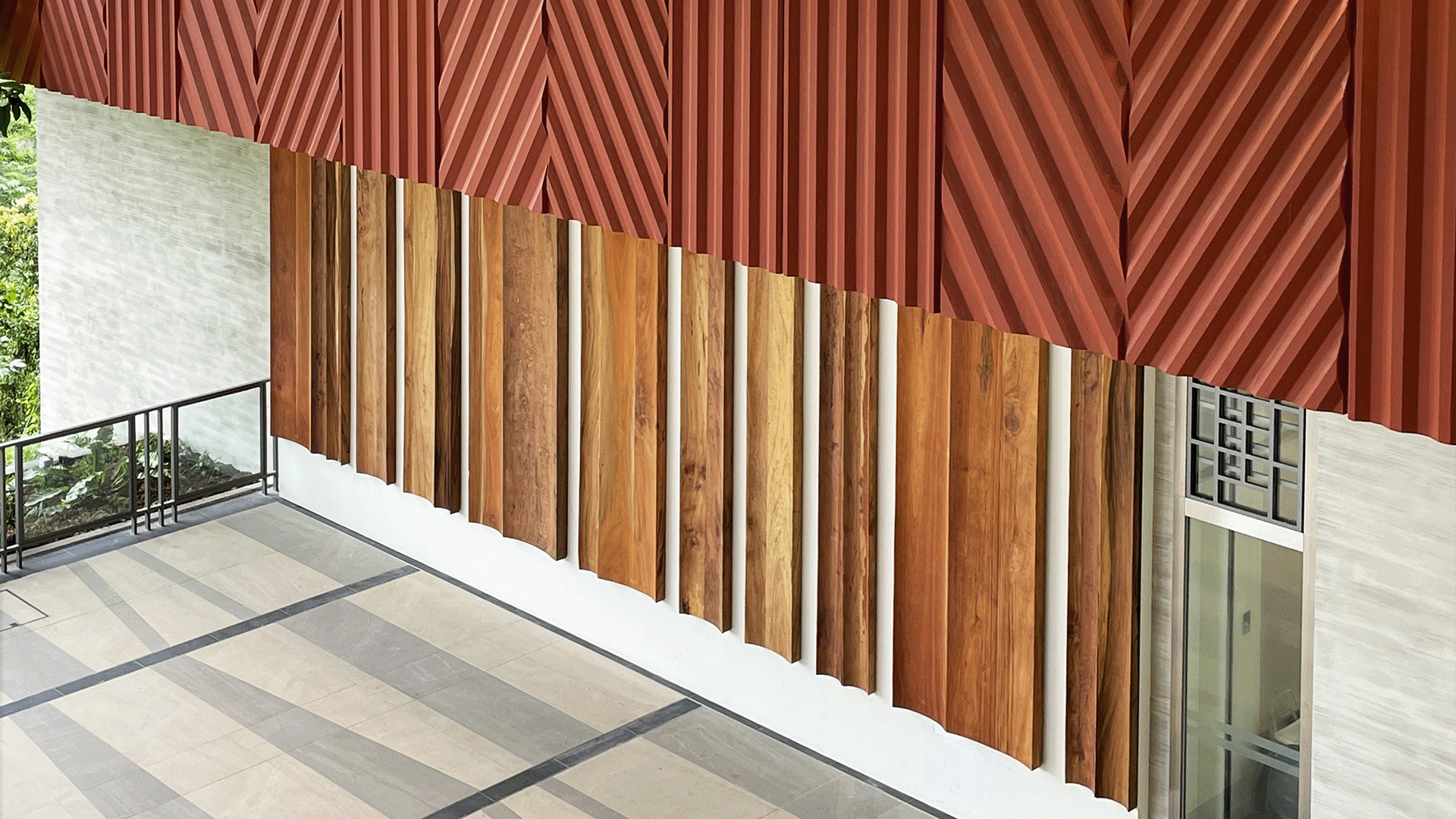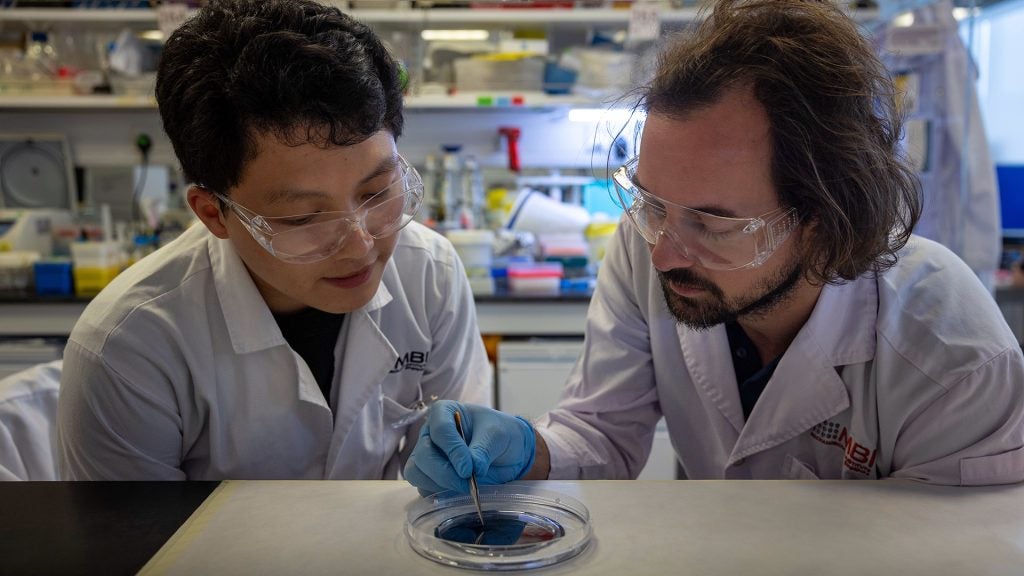
CDE Associate Professor Shinya Okuda (Department of Architecture) has partnered with Alexandra Hospital in the construction of a new medical rehabilitation centre incorporating natural timber installations made from upcycled trees.
The BioHeal (Biophilic Healing) journey, incorporated into the rehabilitation centre within the hospital’s recently opened Cocoon building, includes features crafted from timber harvested from the hospital grounds during the clearing of the construction site.
Assoc Prof Okuda heads the SkyTimber: Tropical Renewable Architecture Design Lab at NUS, which aims to be a pioneer in the development and architectural use of tropical Mass-Engineered Timber (MET), in line with CDE’s commitment to sustainability and multi-disciplinary innovation across design and engineering.
As part of the hospital’s redevelopment and expansion, the BioHeal project follows the principles of biophilic design – an architectural approach which focuses on enhancing connectivity to the natural environment by representing the essence of natural phenomena.
In addition to being a renewable and sustainable material, timber architecture has been shown to bring a number of physiological and psychological wellness benefits by improving air quality, reducing CO2, blood pressure and stress, and even increasing cognitive ability.
Timber installations
Assoc Prof Okuda’s lab was enlisted by the hospital to incorporate the upcycled timber into the features of the Cocoon building’s rehabilitation centre - identifying and harvesting mature trees in the hospital grounds, before sawing them into timber and repurposing them as installations in the new rehabilitation centre.
“The collaboration between Skytimber and NUS with our Office of Campus Planning, resulted in a beautiful tapestry and facade, using upcycling materials, adding a nostalgic touch of terracotta exterior,” said Dr Jason Phua, CEO of Alexandra Hospital. "The aesthetically pleasing design ID and functional furniture for our staff and patients, demonstrated our appreciation and respect for nature."
The new rehabilitation centre was unveiled on 13 March 2024, at a ceremony attended by Dr Jason Phua and Mr Chua Song Kim, Deputy Chief Executive at Alexandra Hospital.
Seventeen trees were selected by the project team to be upcycled, comprising Rain Trees, Jambu, Sea Almond, Rosy Trumpet, Rambutan, and a Bodhi tree.
As each tree comes in diverse sizes, shapes, colours and textures, a ‘tree-to-design’ approach was taken by Assoc Prof Okuda and his team to maximise the potential of each harvested tree.
This resulted in the four installations seen around the building:
Spring Square: Rebirth
This feature wall was sawed directly from logs of a Jambu tree, with the natural live edges of its timber lined up in such a sequence for a biophilic aesthetic.

Well Sphere: Rejuvenate
The Rain Tree timber column design transitions from a straight, flat bottom to a concave upper cornice, resembling a new tree and echoing the resilience of nature.

Rainbow Forum: Collaborate
A tree-to-design approach was taken to maximise the potential of each harvested tree with diverse widths, colours and textures. A series of extra-large timber blocks were also hand-engraved to form concave profiles.

Rainforest Collection: Connect
Using the reclaimed Rain Tree, the combination of live edges and straight sides resulted in the unique modular configurations of the furniture, creating the coexistence of sustainable aesthetics and functionality, connecting to the community.
'Renewable resource'
Commenting on the challenges of the two-year project, Assoc Prof Okuda said: "We invented the ‘trees-to-design’ approach out of necessity to accommodate the unpredictable supply of upcycling timber into the final design configurations. While upcycling trees could be a great renewable resource in Singapore, there's a need to establish a common stockyard of tree logs to buffer the irregular supply, sizes, quantity and diverse species for use in commercial building practices."
He added: “With Singapore's Green Plan 2030 targeting planting an additional one million trees, there are a significant number of trees that need to be felled naturally or for maintenance reasons. We hope the BioHeal project could demonstrate a first-of-its-kind tree upcycling initiative that echoes the spirit of history while embracing modern healing practices."
Images provided by SkyTimber





